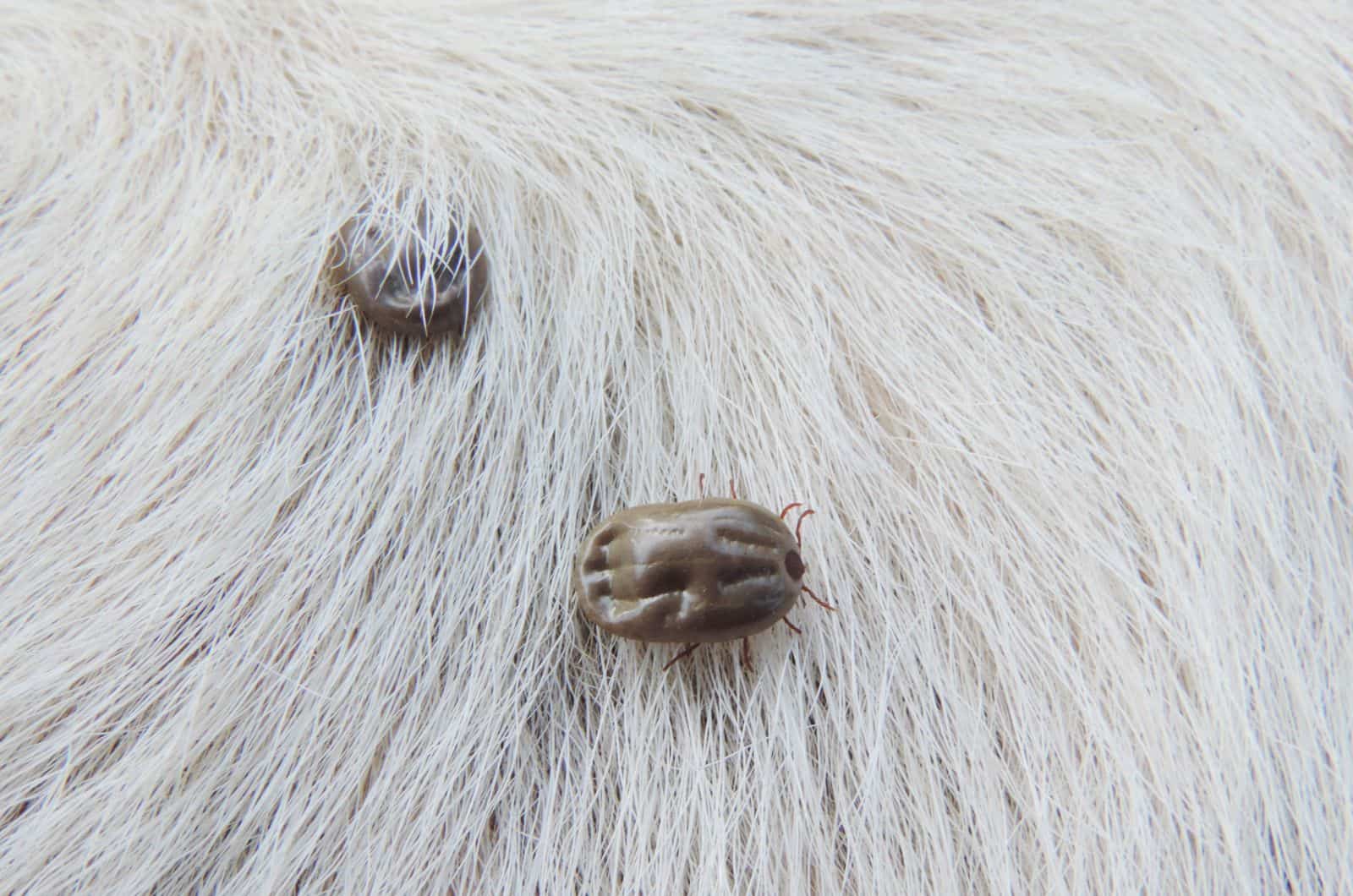Owning a dog is a beautiful thing, and it is something that will stay in your memory for the rest of your life. Just like with everything beautiful, there will be some challenging times while raising a dog. You fear if your dog will get along with everyone, if they will get sick, and many more things.
One of the things that is a concern are parasites. There are many ways to protect your dog from parasites, but there is always a chance that one will get to them even after all the precautionary measures.
One of those parasites is a tick. When it comes to ticks, there are a lot of questions that dog owners may ask, and we understand why. Ticks can be very dangerous for a dog.
In this article, we will go through a lot of things that are connected with ticks from what a tick is, to the difference between a live and a dried dead tick on dog.
There is a lot to go through so buckle up and let us start the ride.
What Is A Tick?
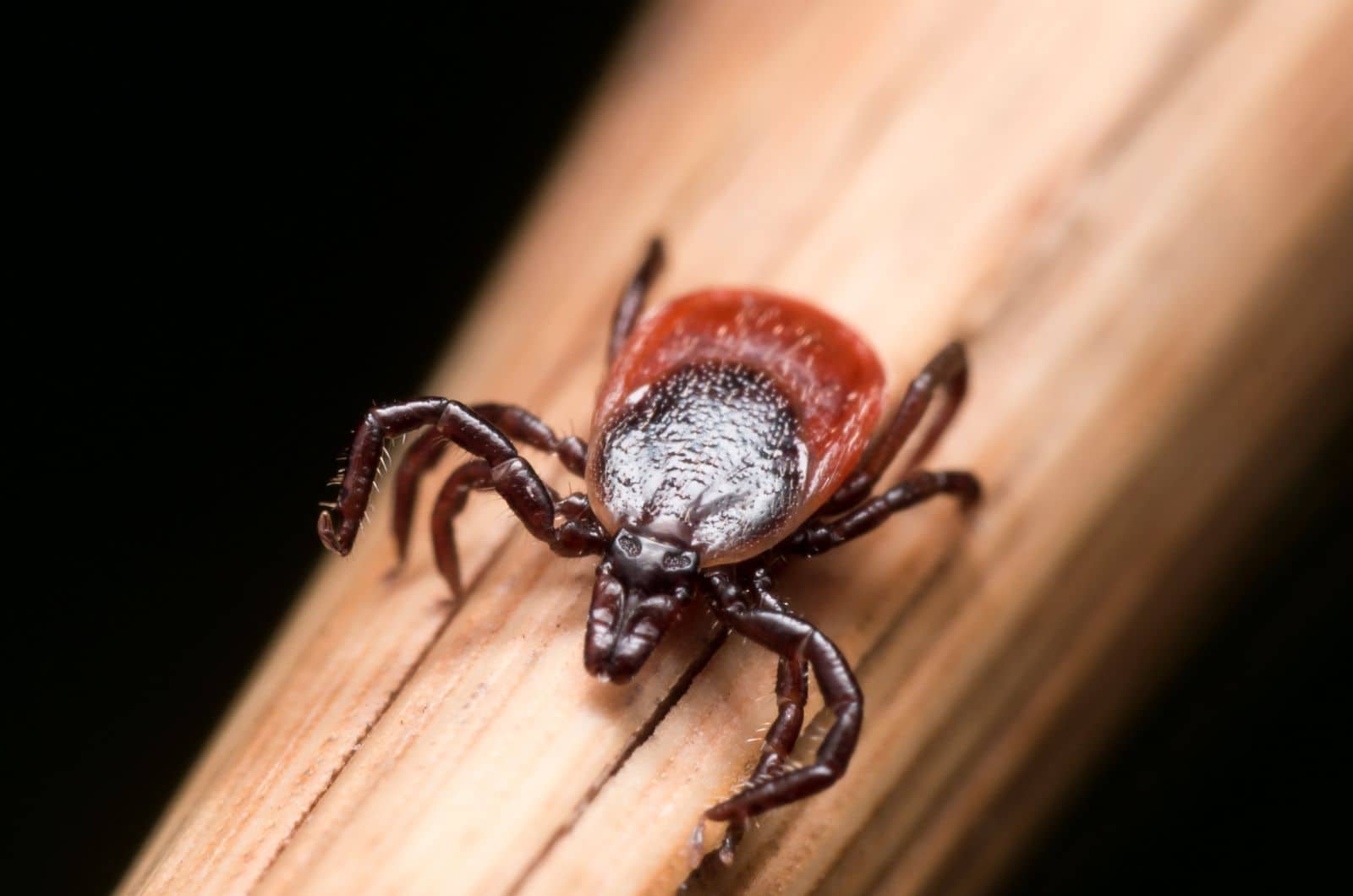
A tick can be called a parasite, an external parasite, or a mite. A tick’s only purpose is to find a host whose blood they will suck on. When they find a host and attach themselves to it, they will drink the dog’s blood until they are full, or in a more professional way of saying, until they are engorged.
When they become engorged, they can either fall off a dog to continue their life by molting or reproducing, or they can die on the dog’s skin still being attached. Sometimes, they can detach themselves, but still remain loose in the dog’s coat.
Ticks have four stages of life:
– egg
– larva
– nymph
– adult
The last three stages are the ones in which they can get attached to your dog and suck their blood. Only the eggs are harmless, but they do develop fast so they quickly transition to the dangerous stage. When they have feasted and dropped off the dog, depending on their stage of life, they will either molt or reproduce to lay eggs.
The interesting thing is that after the nymph stage, they either become male or female. Male ticks don’t feast on blood – only female ticks do. The only role of the male tick is to mate with the female. After the reproduction, the male tick dies.
Females have a liquid that helps them attach firmly to the dog’s skin. Males do get on the host with the female, but only to reproduce, and they will either fall off the dog or stay tangled in the dog’s fur.
Even if you can determine that you have found a male tick that is harmless on your dog, you need to know that there is a big chance that a female tick was, or still is, on your dog.
It is important to know that ticks don’t thrive in dry places. When a tick falls off a dog while still being alive, it will usually die within a week or so because of the dry conditions in your home. However, there are some ticks that can handle the dryness.
If you see a live tick in your home, make sure to inspect everything in your house because you might have a tick infestation. But, this is a rare occasion because most of them can only live in wet places.
How Do I Know If My Dog Has A Tick Or Something Else On Its Skin?
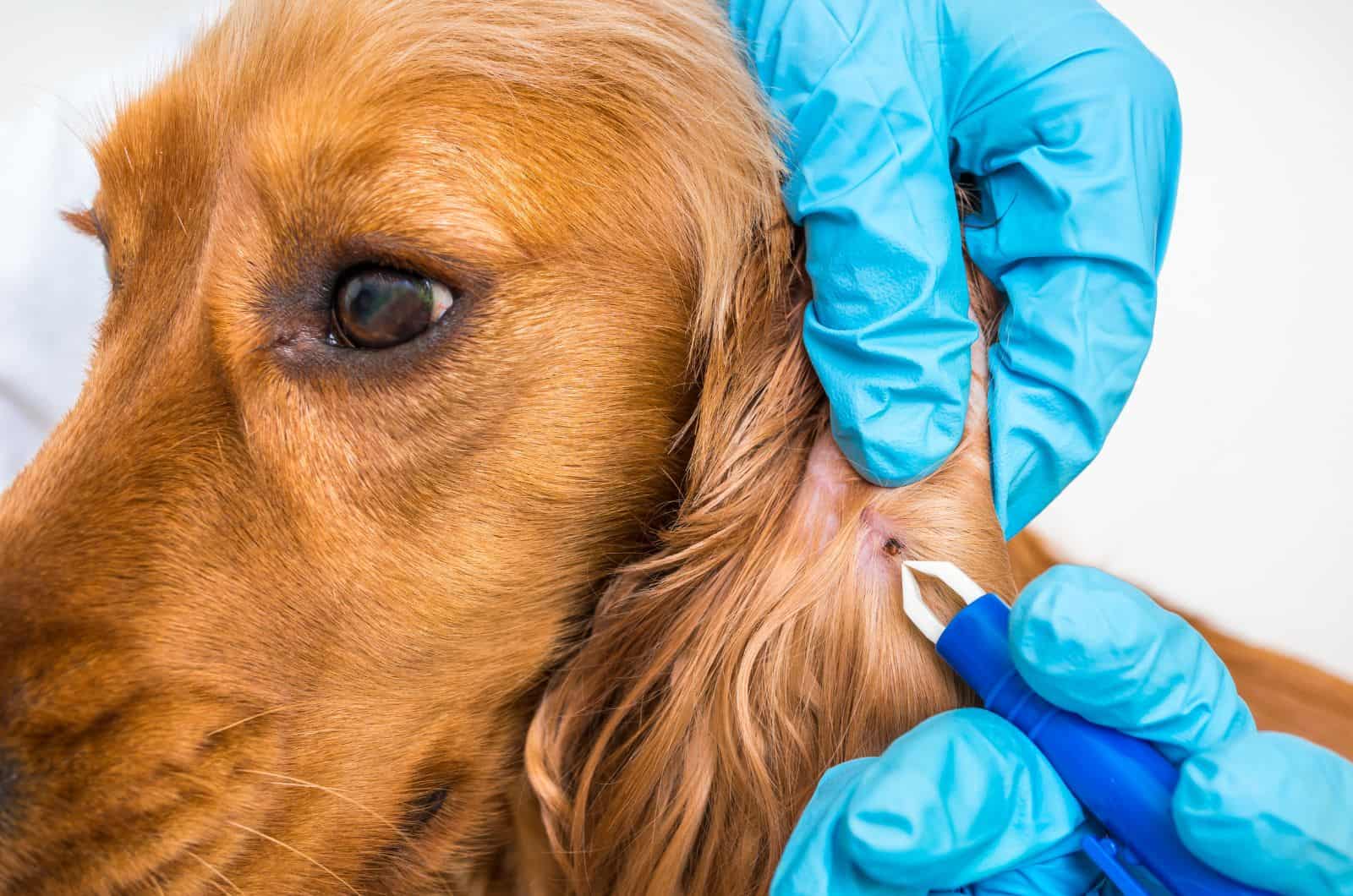
Your dog can have some bumps on its skin for different reasons. They either injured themselves or played a bit rough. Sometimes, those bumps may look like parasites while other times, they truly are.
How can you detect a tick? Well, there are some differences between a dead and an alive tick. Sometimes, they are very obvious, and that depends on their size. We will describe both live and dead ticks.
Live Ticks
The main factor that can determine if a tick is alive is if it moves. They will move their legs and usually their body, but the tick’s head will stay in one place. They have teeth that help them attach themselves to the dog’s body.
But, when they are attached and feasting, the head can not move. Another thing that you need to keep an eye on is the tick’s color. A tick that is alive and unfed will be either brown or black. This is a good sign because this means that the tick did not spend a lot of time on your dog’s skin.
Sometimes, if the black or brown tick is not that big, people might mistake it for a skin tag or a small bump. However, after they have had a blood meal, a live tick will turn into a silver, almost white color.
If you see a white tick attached to your dog (or even detached), you need to react because the tick probably did its job. It can be dangerous for your dog’s health so we advise you to contact the vet just in case.
Dead Ticks
What a dead tick looks like can depend on two factors:
– How much they have eaten
– How long they have been dead
Some of the characteristics will be that they are skinny, wrinkled, dried up, full of blood, or flat. The tricky thing is that the male ticks are naturally flat since they don’t feast on the blood so it can be hard to determine if the tick has feasted or if it is just a male tick.
Flat ticks will dry up faster than engorged ticks because they are smaller in size and don’t have blood in them, and because of that, they dehydrate faster.
The first thing that you will see is that the tick isn’t moving. This is in the case where the dead tick is still attached. If you see a tick that is not attached, you are certain that it is dead. But, the question, ˝How long has this been on my dog?˝ arises.
Another thing you can look at is their legs. First, you need to know that an adult will have eight legs while when in the other two stages, they will have six legs. When they are alive, they move their legs and they stand straight.
A dead tick will have dried-up legs, and because of that, they will curl up.
Well, we made a small list of possible appearances of ticks that have died according to the amount of blood they ate:
1. Unfed ticks. These ticks will be flat and dark brown or even black. These ticks usually are not attached to your dog because they didn’t have a chance to feed. You will find them loose in your dog’s coat.
2. Flat and dried ticks. This means that the tick has passed a long time ago or that it was unfed. These ticks may have been on your dog for a long time, but have also been dead for a long time, and this may be dangerous.
3. Tick that has eaten moderately. These ticks will be a bit bigger and lighter than the unfed tick. This is something hard to tell apart if you can’t compare the two. If you are not sure, try to save the tick so you can show it to your vet. But, these ticks will be a bit wrinkly, and that is the main difference.
4. Full (or engorged) ticks. These ticks will be silver, white, or even gray-green. They will be big since they are full of blood. If they have been dead for a long time, they will have some wrinkles on them.
We will describe two types of these so you can understand better and know how to react.
Engorged And Dried Dead Tick On A Dog
Engorged and dried dead ticks on your dog can be worrying. This means that the tick has filled itself up with blood, which means that it had been on the dog’s body long enough to transfer some diseases.
This is worrying because an infected tick can transfer these diseases in 24 to 48 hours, or even less sometimes. These engorged ticks are big and round, or in other words, globular, and they almost look like a raisin, but a white, silver, or greenish one.
These ticks can still be attached to the skin even if they are dead, but they can also stay in the dog’s fur. Dead ticks fall as well, but when talking about engorged dead ticks, it is better to find them and react rather than for them to fall, and you probably never find out that there was a tick on your dog.
We will list how long it takes in certain stages of their life to become engorged:
– Larvae: 3-5 days
– Nymphs: 3-5 days
– Adults (females): 4-7 days
Why can this help? If you see that an adult tick is dead and engorged, this means that they have been on your dog for at least 4 to 7 days. This means that there is a big possibility that the tick infected your dog with some disease.
Larvae and Nymphs are a bit tricky because they are very small. Larvae that are unfed are 0.5 mm and the nymphs are around 1 to 2 mm.
Dead Flat Tick On A Dog
This is a good sign. This means that the tick didn’t attach itself to the dog, and because of this, your dog is safe from any disease. Most likely, they didn’t even bite the dog, but if they did, they weren’t on it for longer than 24 hours.
These ticks are rarely attached to the dog. They are usually stuck on the dog’s coat. If you find this type of tick on your dog, make sure to do a thorough examination of your dog. Why? Well, this might have been a male tick, and there is a big chance that there is a female tick in there somewhere.
And, she is the one that can cause problems.
Dead VS. Alive Tick: Which Is More Dangerous?
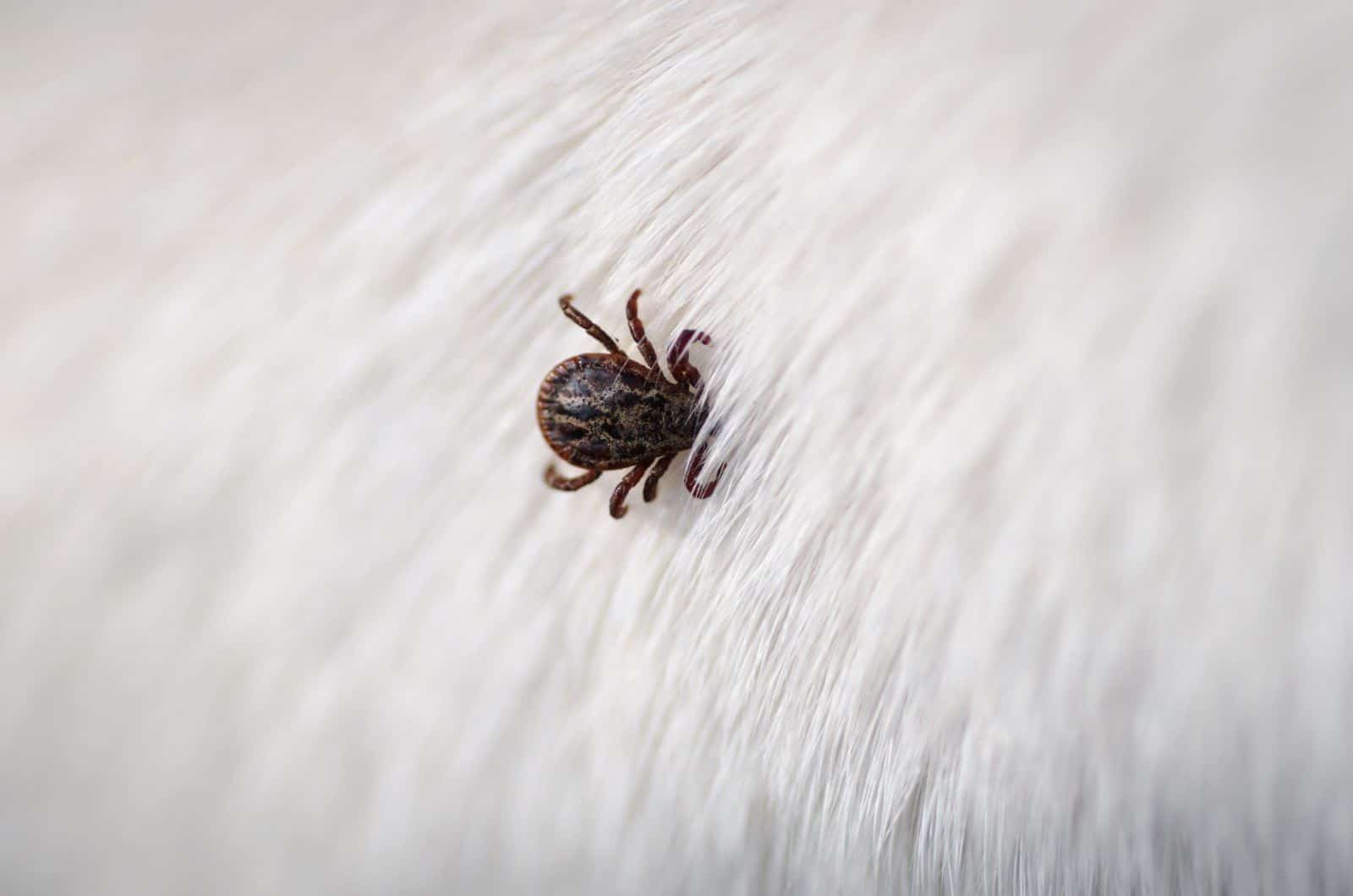
This depends on a couple of factors. For example, a flat tick, either dead or alive, is not dangerous. Since they are flat, they are either a male tick or a female tick that didn’t suck on the dog’s blood. If they didn’t get attached and suck blood, this means that they can’t transmit any disease.
On the other hand, engorged ticks are dangerous both dead or alive. Engorged ticks are a sign that they were attached to your dog for quite some time, and had the opportunity to transmit any disease that they are carrying.
But, if you see a tick that is dried up and not engorged, then for sure, it is a good sign. This means that even if they got attached, they didn’t have enough time to pass any disease through the dog’s bloodstream.
This would mean that the tick wasn’t on the dog’s skin for longer than 24 hours. If the tick was on your dog for a couple of hours or generally less than 24 hours, it can’t pass any disease.
When Are Ticks The Most Active?
Most ticks are considered to come out in the warmer climate. They love warm and moist environments. Because of this, you should pay special attention to this during the summertime and warmer springtime.
Unfortunately, there are some ticks that are active year-round. An example of a tick that can flourish in a colder climate is a deer tick. These ones are tricky because they are known to carry Lyme disease.
This is the reason why your pet needs to be protected throughout the whole year. There are many forms of protection from many parasites, including ticks. Collars and ampules are just some of them. We, as pet owners, want what is best for our dogs.
If you are not sure what to use, you can always ask a vet. There are different rules for different dogs so make sure to choose the right form of protection.
What Are Some Of The Types Of Ticks?
As we already mentioned, there might be some bumps or marks on our dogs that naturally occur. Sometimes, some of these, like a nipple or a skin tag, can be mistaken for a tick. This is not a bad thing – it shows that you take good care of the dog.
It is better to mistake something harmless for something dangerous than to miss a tick that can cause some serious problems for your dog. We mentioned some differences between a dead tick and an alive tick.
But, there are some differences between the types of ticks, or, in other words, tick species. We made a list of the most common dog ticks.
– Brown dog tick. These ticks are also called house ticks or kennel ticks because they tend to infest the indoors, especially kennels. They are active all year round. Reddish or brownish is their color. They are known to carry Rocky Mountain Spotted Fever (RMSF) and Ehrlichia.
– American dog tick. They are known as the wooded tick as well. They have brown legs with a chestnut brown body, with some white streaks or spots. These ticks are active year-round, but the peak of their activity is in the spring and summer. The disease they can spread is Rocky Mountain Spotted Fever (RMSF).
– Deer tick. They are known as the black-legged ticks, which is an indication that these ticks have black legs. The tick’s body is reddish-brown, and they have a black or dark brown shield-like shape between their mouth-parts and their body. These ticks can be found in wooded areas, especially during spring and fall. They are known to carry Lyme disease, and Anaplasmosis and Ehrlichia as well.
– Lone star tick. These ticks are tan or brown, but there is a small difference between the male and female. A female tick will have a silver or white spot on their back, while the male tick will have scattered white spots. They are found in shrubbery near creeks, rivers, and lakes. They can spread Ehrlichia and Rocky Mountain Spotted Fever (RMSF).
How To Remove A Dried Dead Tick From A Dog
Removing a dead tick is almost the same as removing an alive tick. Dead ticks are not dangerous for you or your dog, but they can be irritating to the dog’s skin if left for a longer time. If it is left, your dog’s skin can become irritated, red, itchy, and inflamed.
You need to be careful if you see a loose tick in your dog’s fur. Sometimes, the tick’s head can still be attached to the dog, but the body is loose. But, you will easily detect if the head is still in. This is the reason why you can’t just leave the dead tick even if it is not dangerous.
For people who have removed live ticks before, this will be easy, but if you have never removed a tick (dead or alive), we prepared a step-by-step guide on how to do it properly.
We will first list the thing that you will need in the process of removing a dried dead tick:
– 70% rubbing alcohol (isopropyl alcohol), hydrogen peroxide, or first-aid antiseptic ointments
– A pair of gloves
– Pointy tweezers that need to have sharp and thin ends, or any other tick removal tool
– A plastic bag
– Paper towel
Now that you have prepared all the equipment, we can start with the process of removal.
1. Locate The Dried Dead Tick On The Dog
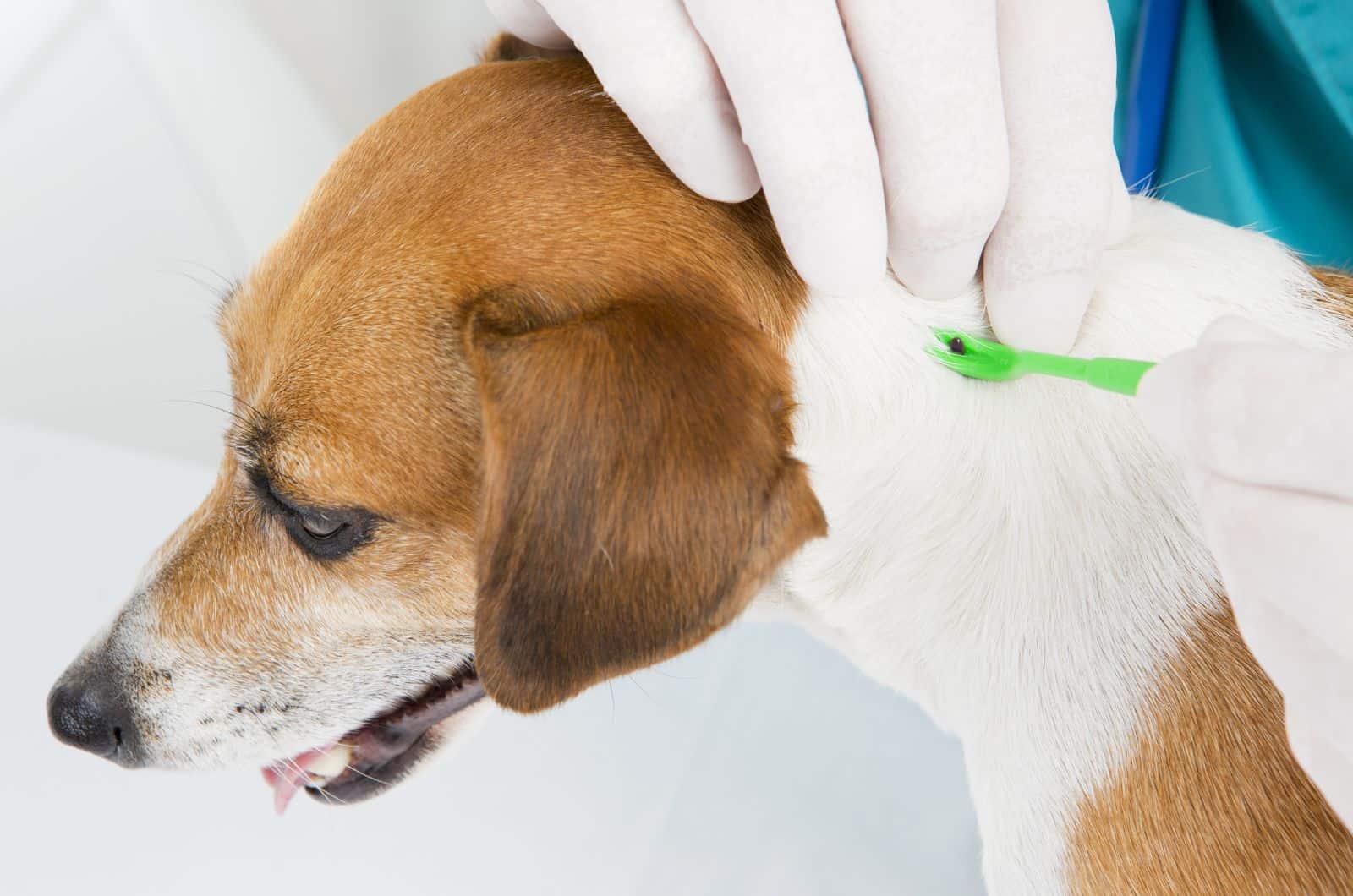
It is very important to find the exact location of these little suckers. Sometimes, this might be a bit difficult if your dog has a longer coat. If you feel it when you are petting your dog, it can also be difficult. But, when you decide to examine your dog, these are the places where you should look the most:
– belly
– neck
– head
– nose
– mouth
– ears
– under the legs
– paws
These areas have the best environment for the ticks to survive in, and it is very hard to find them there, especially with long-coated dogs.
Before we start with the guide, we need to say to never use nail polish, soap, petroleum jelly, or fire to remove the tick. This can damage the skin, and it can irritate the tick, which makes it produce more saliva, which makes it easier for disease transmission.
2. Put On Your Gloves
Putting on gloves will protect you from accidentally touching the tick. Some of the gloves you can use are:
– medical exam gloves
– vinyl disposable gloves
– nitrile exam gloves
Even if the dead ticks are not dangerous, you don’t want to take any chances. The gloves are good for the dog as well. When you remove the tick, you can’t touch the small wound that was left with your bare hand because it can get irritated or infected.
3. Part The Dogs Hair
This will be needed if the dog has long hair. This can be a bit of a hassle, especially if the dog doesn’t want to stay calm. You need to part the hair so you can get a very good grip on the little parasite.
If you have any family members or a friend around, you should ask them to help you part the hair and calm the dog down. The best thing would be if they can hold the hair like that so you can easily remove the tick.
4. It Is Tweezer Time
Use the pointy and thin tweezers with which you will be able to grip the tick precisely. The point is to grab the tick as near as possible to the dog’s skin. But, this can be tricky when it comes to the grip. It should be firm, but not too much.
You should grab it precisely with strength so it doesn’t slip from the tweezers, but not hard enough for it to rupture. You need to grab it steadily, and this is why the dog should be as calm as possible.
When you grab it, you need to pull it straight up from the dog’s skin. When the tick detaches, you will probably see a small piece of dog skin being pulled with it. Don’t worry – this is normal. Ticks have teeth that are used to attach to the dog so that piece of skin won’t be big.
The important thing is to never twist the tick with the tweezers or squish it to the point where it ruptures. This can be dangerous, especially if the head is still attached to the skin.
If the tick is ruptured, it can release toxins that can go into the dog’s bloodstream. This can cause irritation to the skin and even some potential health diseases.
The tick will be attached pretty strongly to the skin, and it might put up some fight, but if that occurs, don’t twist it around not only because it could rupture, but an irritated tick can produce more saliva, which can further spread disease on your dog.
There is a possibility of the body getting detached from the head. If you see that you can’t get it out properly, you can leave it. If you touch it too much, you could potentially cause skin inflammation to your dog.
The head will naturally dry and fall out. However, if you don’t feel comfortable leaving it, you can always take your dog to the vet to remove it for you.
The best is to buy tweezers that are specifically made for removing ticks. If you use normal tweezers, you will have some difficulties. You won’t be able to grip the tick properly, and you might squeeze it a bit too hard because it is hard to determine the pressure.
5. Clean And Disinfect The Bite Area
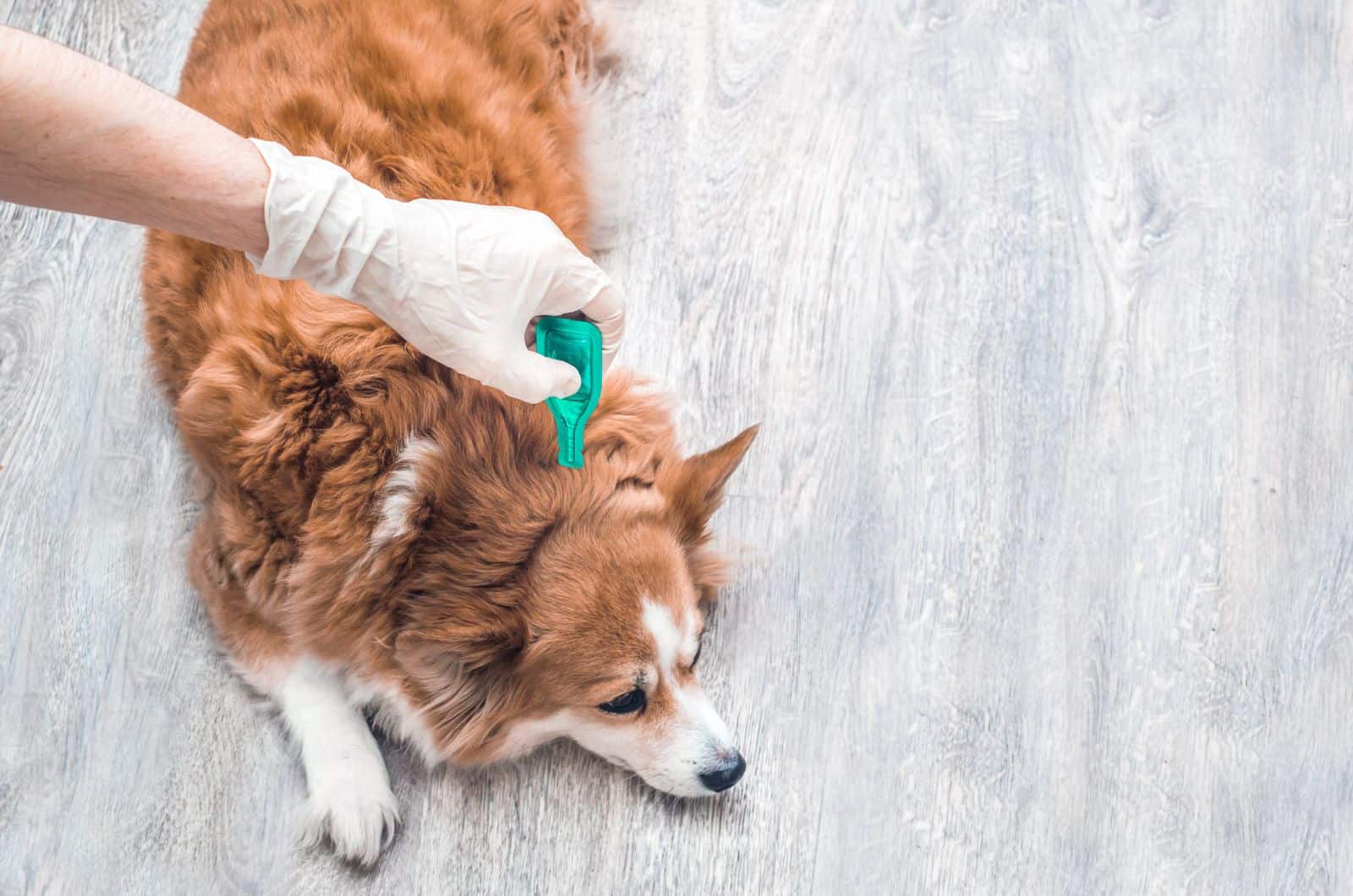
When you remove the tick, it is very important to clean the bite site. As already said, during the removal process, there will probably be some skin moved from the part where the tick was attached. It will also be red, but don’t worry – that is normal.
When the tick is removed, use any of the ointments we recommended to clean the wound. The best would be the 70% isopropyl alcohol, or the hydrogen peroxide. You will put some ointment on a cotton pad and gently rub it on the bite area.
It is also important to clean around the wound so that all the area is clean, so there is no possibility of the wound getting infected. After that, you can put some antiseptic ointments on it like Neosporin or Betadine so you will be sure that the area is super clean.
This way, you remove all the filth and any possible toxins that may be left behind from the tick. You also need to clean the tweezers properly in case you need to use them again sometime. Some toxins can also be transferred onto the tweezers during the extraction process.
6. Put The Tick In A Bag Or Container
After you remove the tick, it is a good idea to place it in either a Ziplock bag or a plastic container. This should be done whether the tick is dead or alive. You should put the tick in the bag whether you want to take it for an examination to the vet or to throw it away.
The thing you should never do is throw a tick, especially a live one, in the toilet. Since ticks like wet environments, some of them can survive going down the drain, and can infect other areas. If you want to throw it away, make sure that it is dead and throw it in the garbage.
If you want to store the tick so you can take it to the vet, put the tick on a damp paper, then put it in the bag. If you can’t get an appointment for some time, put the bag in the fridge. This might sound gross, but you need to preserve the tick so the vet can examine it.
Always write down the date you removed the tick. It is also a good idea to write down how the tick looked when you found it and extracted it. This way, the vet can give you the proper diagnosis.
After you put the tick in the bag, take off the gloves and throw them in the trash. And, just in case, wash your hands thoroughly.
What If You Don’t Remove The Tick Properly?
This question is usually asked if you see that the head stays attached while the body is removed. This isn’t a big concern. When there is no body, the tick can not infect your dog with any disease. A lot of people don’t feel comfortable leaving it in.
The dog’s body will naturally reject the head, and it will fall out. But, if you don’t want it to stay in, and you are not sure how to get it out, ask for professional help. As we already said, the skin may be a bit red and sore, and there might be granuloma from the dog licking the wound, which is also totally normal.
Some of the things that can happen after you take out the tick – and which are perfectly normal are:
– Appearance of a small bump
– Thickened skin
– Redness
– Irritation
– Hair loss near the tick bite
– Swollen skin
– Scab
If your dog had a tick on its head, and if there is some irritation, you will probably see your dog rubbing its face on either the floor or on some surface. You need to stop that by massaging that spot so the itchiness goes away.
The thing that may concern you is if you twisted and wiggled the tick too much. Then, there is a danger of some potential disease transmission. Remove ticks as calmly as possible. If you think that you will apply too much pressure on the tick, then you should save that for the vet.
Should You Take Your Doggy To The Vet After Tick Removal?

You don’t have to take your dog to the vet after tick removal, especially if the tick was dead and dried up. There are low chances that the tick transmitted any disease to your dog. You can take the tick to the vet to hear of any suggestions from the vet.
Some people may ask why it is not necessary to take your dog to the vet. Well, the diseases that ticks carry will not develop until 4 or 5 weeks after the transmission. Even if you take your dog to the vet to do all the necessary tests, they will probably end up being negative at that point.
You need to keep an eye on your dog for the next 4 to 5 weeks after you remove the tick. The thing you need to do as well is keep the tick bite area clean and disinfected.
If the wound becomes irritated, the dog will probably itch it and can possibly make the wound even worse. If you live in woody areas or a place where there is a lot of humidity, you can expect to have a lot of ticks around you.
Tick prevention needs to be put on your dog immediately so there are no new ticks on your dog. Examine them daily, especially if they have a long coat because the tick can hide pretty well in all that hair.
If your dog has already had tick prevention on him, you can sleep calmly because that prevention probably killed the tick as soon as it bit your dog, or even before the bite, and that is a piece of good news.
What Diseases Can A Tick Transfer To Your Dog?
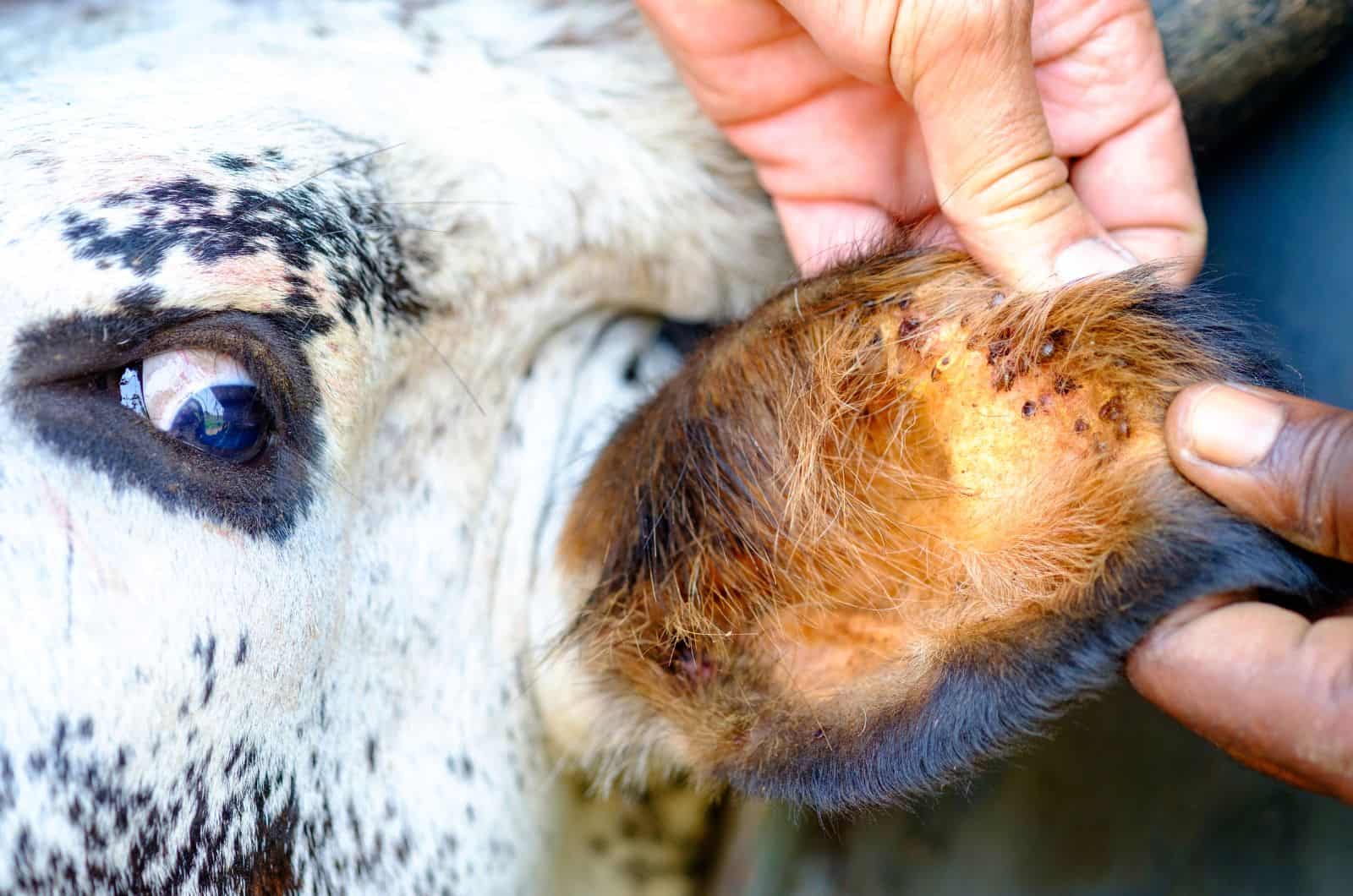
We already mentioned that ticks can transfer some serious diseases. It is normal to be concerned about your dog if you have found a tick, either dead or alive. Some of the diseases can be life-threatening.
Sometimes, a dog will show some signs that are a bit odd; for example, your dog might all of a sudden become very attached to you. This is a sign that something is wrong with him. Other signs will be more obvious, like vomiting, weakness, etc.
Unfortunately, some diseases can not be traced until the symptoms start to show. We listed and described some of the tick-borne diseases.
1. Rocky Mountain Spotted Fever
This disease can spread to the nervous system, and because of that, your dog will have some difficulties walking. This disease can also cause the death of some tissue in your dog’s extremities, but this is in severe cases.
The blood vessels can also be damaged. Some of the other symptoms that Rocky Mountain Spotted Fever can cause are:
– coughing
– vomiting
– loss of appetite
– abdominal pain
– swelling
If your dog has abdominal pain, it is hard for him to explain that to you, but some of the signs might be that he refuses to walk.
This tick-borne disease is treated with antibiotics. Tick control medication can prevent this disease from developing.
2. Lyme Disease
This disease is transmitted by a black-legged tick, but this tick can also cause some other diseases so you need to make sure to protect your dog from these. Lyme disease can also be transferred to people.
Some of the symptoms of this disease are:
– Erythema Migrans (skin rash)
– Vomiting
– Diarrhea
– Seizures
– Lameness
– Blood in the urine
– Fatigue
– Fever
– Lethargy
– Swollen lymph nodes
Sometimes, your dog might be gagging, but not actually throwing up.
The main parts that this disease affects are the joints and legs. You will notice your dog not being able to walk properly. The good thing is that if you find a dried tick on your dog, there is no chance of that tick transmitting this disease.
The bad thing about this disease is that it can not be treated and detected before some of the symptoms start to show. If you notice any of these symptoms, run to your vet immediately. This can be tricky for people who didn’t know that their dog had a tick.
Some of these symptoms are connected with other illnesses that are less dangerous as well. The bacteria that causes this illness is Borrelia. When the vet finds this bacteria, he or she will give the dog proper treatment.
Your vet will also do some blood and urine tests to make sure that the kidneys are in good condition, and then they can prescribe the proper antibiotic to the dog. If the illness is not treated for a longer time, it can dramatically damage the kidneys.
There might be some changes in urine color if your dog has problems with kidneys.
Another good thing is that some improvement can be seen even after a week of treatment. Most dogs make a full recovery.
3. Canine Babesiosis
This disease is not only spread through a tick bite, but it can also be spread by a bite from a dog that is infected. Some of the signs are:
– severe anemia
– dark urine
– dry nose
– weakness
– systemic shocks
This illness can be treated with antibiotics, and dogs can get well. The problem is that there is a chance of a relapse somewhere in the future. You need to monitor your dog frequently after the treatment.
4. Canine Ehrlichiosis
This disease is carried by a brown tick and an American dog tick. The way it develops is in three stages:
– acute
– subclinical
– chronic
Some of the signs of this disease are:
– respiratory distress
– lethargy
– anemia
– bleeding episodes
– neurological disturbances
It can be cured with antibiotics, but they will probably be given to your dog for a longer period of time. There might be a need for a blood transfusion if the bleeding episodes occur.
To Sum It Up
Seeing anything wrong with your dog can be upsetting. Ticks can be very dangerous, but if your dog is protected, the tick will most likely die. When you see a dried dead tick on dog, you can be sure that the protection worked.
Seeing an engorged tick is a sign that your dog might be infected so you should contact the vet immediately for further directions. Most of the diseases can not be found until the signs occur, and that is approximately 4 to 5 weeks after the removal of the tick.
We hope that your doggo is protected, and if not, that the tick did not have time to infect the dog with any disease. Things happen, and it is not your fault. We are sure that you will do everything in your power to make sure that your dog stays happy and healthy.
Read Next:
• What Could Crusty Scabs Around Dog’s Mouth Mean? 9 Explanations
• What’s With That Tick Scab On Dog? Tick Removal 101
